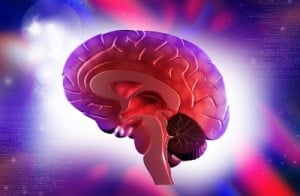 As a parent, all you want is to see your child succeed in their life. If your child suffers from a brain-based issue or disorder, daily functioning becomes more difficult which can burden families. Brain-based issues can include everything from anxiety and depression to learning disabilities to behavioral issues. Parents often struggle to find the right course of treatment to ensure that their child can grow up to be a well-adjusted adult and experience academic, career, and personal success. Success in the formative years of their youth is crucial. If your child is struggling to succeed, neurofeedback may be the treatment of choice, and here’s why.
As a parent, all you want is to see your child succeed in their life. If your child suffers from a brain-based issue or disorder, daily functioning becomes more difficult which can burden families. Brain-based issues can include everything from anxiety and depression to learning disabilities to behavioral issues. Parents often struggle to find the right course of treatment to ensure that their child can grow up to be a well-adjusted adult and experience academic, career, and personal success. Success in the formative years of their youth is crucial. If your child is struggling to succeed, neurofeedback may be the treatment of choice, and here’s why.
1. Neurofeedback is natural and medication free.

Neurofeedback begins with an initial appointment to take what is known as a brain map, followed by a quantitative EEG to identify where the brain is struggling to function at its best. Once this has been identified, protocol is then developed to target these areas of the brain that need improvement. The neurofeedback sessions that follow involve the patient watching a computer screen where the brain is stimulated and rewarded for naturally creating healthier brainwaves. This is a natural process that teaches the brain to function at it’s best.
2. Neurofeedback sets a child up for a future of academic success.

Children who participate in neurofeedback sessions see improvements in grades, ability to maintain focus in class, have better organization and task planning, and more. Building positive school habits early on will directly impact a student’s success in the future. Getting off to a good start in academics is necessary to achieving academic success throughout the child’s life.
3. Neurofeedback reduces behavioral problems.

Neurofeedback sessions aim to train the brain to function more calmly and ultimately more efficiently. For example, if the child’s brain is able to process information easier, tantrums are less likely to occur because the child is able to function successfully. Parents of children doing neurofeedback have seen declines in other negative behaviors.
4. Neurofeedback improves duration and quality of sleep.

Getting a good nights sleep is an essential part of living a successful life, and this is especially true for your child. If your child does not get a good nights sleep, both in how much sleep they get and the quality of the sleep, your child will not be able to perform at their best. This means they will not be able to maintain focus in class, finish assignments, take tests efficiently, and more, causing them to fall behind. Neurofeedback brain training works to improve sleep, including making it easier for the child to fall asleep, stay asleep, and get the quality of sleep needed to have a successful following day.

5. Neurofeedback is corrective care.
The changes to the brain that are a result of neurofeedback are durable and permanent. Therefore, neurofeedback is truly corrective care. If, after neurofeedback, the brain receives an insult, such as physical injury or a disease affecting the brain, the individual may need to return to neurofeedback to correct these problems.
First image courtesy of David Castillo Dominici at FreeDigitalPhotos.net
Second image courtesy of photostock at FreeDigitalPhotos.net
Third image courtesy of digitalart at FreeDigitalPhotos.net
Fourth image courtesy of Ambro at FreeDigitalPhotos.net
Fifth image courtesy of Ambro at FreeDigitalPhotos.net
Sixth image courtesy of imagerymajestic at FreeDigitalPhotos.net








